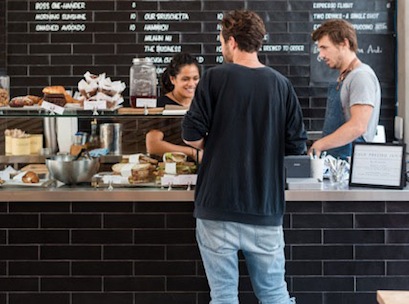This column started out about retailers who are delivering product and services outside of their core category to create differentiating experiences, however, when I sat down to write it after chatting to a few people and synthesising some research, I realised the real story is about the rebirth of service to create differentiated experiences. The idea crystallised when talking to concept retailers Danny Sekulich and Benny Walters of The Stables. When I asked what inspired them to create
a multi-functional retail concept, Daniel talked about the disappearance of service and iconic buildings, among other things.
In a way, service can appear as an old fashioned concept when you consider people’s short attention spans and the convenience of e-commerce, although today’s expectation of service though is so much more sophisticated as to be a key differentiator for many brands.
It is the externalisation of the culture to customers, and branding practice has been focused on purpose and culture for some time now.
The Stables flagship includes fashion, a café, office space, and a soon to open bar and restaurant. To create a cohesive experience not only has the architecture and product mix been considered, but the service experience from zone to zone is critical to its success.
At the heart of The Stables service philosophy is the desire to create a place to relax; to genuinely welcome all regardless of age or style; to be informed about the product; and to use emotional intelligence to dial the consumer engagement up or down, depending on the needs of the individual.
The Stables
In Danny’s words, “everyone has to behave at their best”, and that includes the founders, which means constantly critiquing their own behaviour and leading by example.
For other brands, service proposition means something different, but with the same intent to deliver a differentiating and hopefully compelling experience.
Through the brand lens, service, purpose, and culture merge to create the human to human dimension of the brand.
Bupa’s brand purpose is to help people live longer, happier, and healthier lives by supporting individual and family health. The health insurance stores were once a place to transact and make claims.
In 2012 I had the pleasure of working with the team to transform the teller store model into a health partner destination*.
Fundamentally, the resulting store design was dictated by the health partner service experience we wanted to create and curate. The store became the staging platform for delivering on the brand’s higher purpose, through content, digital tools, and open service opportunities (instead of closed behind a teller) to connect, inform and facilitate – a great example of how the human dimension unites purpose, service and culture.
A global example of service reborn is Umpqua Bank. This Oregon community bank is celebrated for its unique and leading banking style. Created by the community, for the community, Umpqua Bank takes its brand promise very seriously.
Not only does its stores deliver better on banking needs, including a state of the art digital experience, they are designed to be a community destination. The service extends to facilitating use of the space by the community after hours for things like yoga classes, talks, and music (in 2006 they even opened an online music store).
The return of good old fashioned service is not a quaint ideal when you consider how dramatically the goal posts have changed in light of the examples above, and how important culture is to brand differentiation.
Service designed to deliver on a brand promise can be transformational to how consumers experience a brand. At the most basic level service must deliver help to transact. For a long time this has meant convenience, efficiency and ease.
Today, service is being used as a strategic tool to inform and educate, integrate parts of your life, create a third space (alternative to home and work), and ultimately increase brand loyalty.
Rather than old fashioned then, perhaps service is a classic.
*Clair was strategy director for e2 Sydney in 2012.
Clair van Veen is strategist and GM at strategic design agency, Designworks.
The Stables cafe

